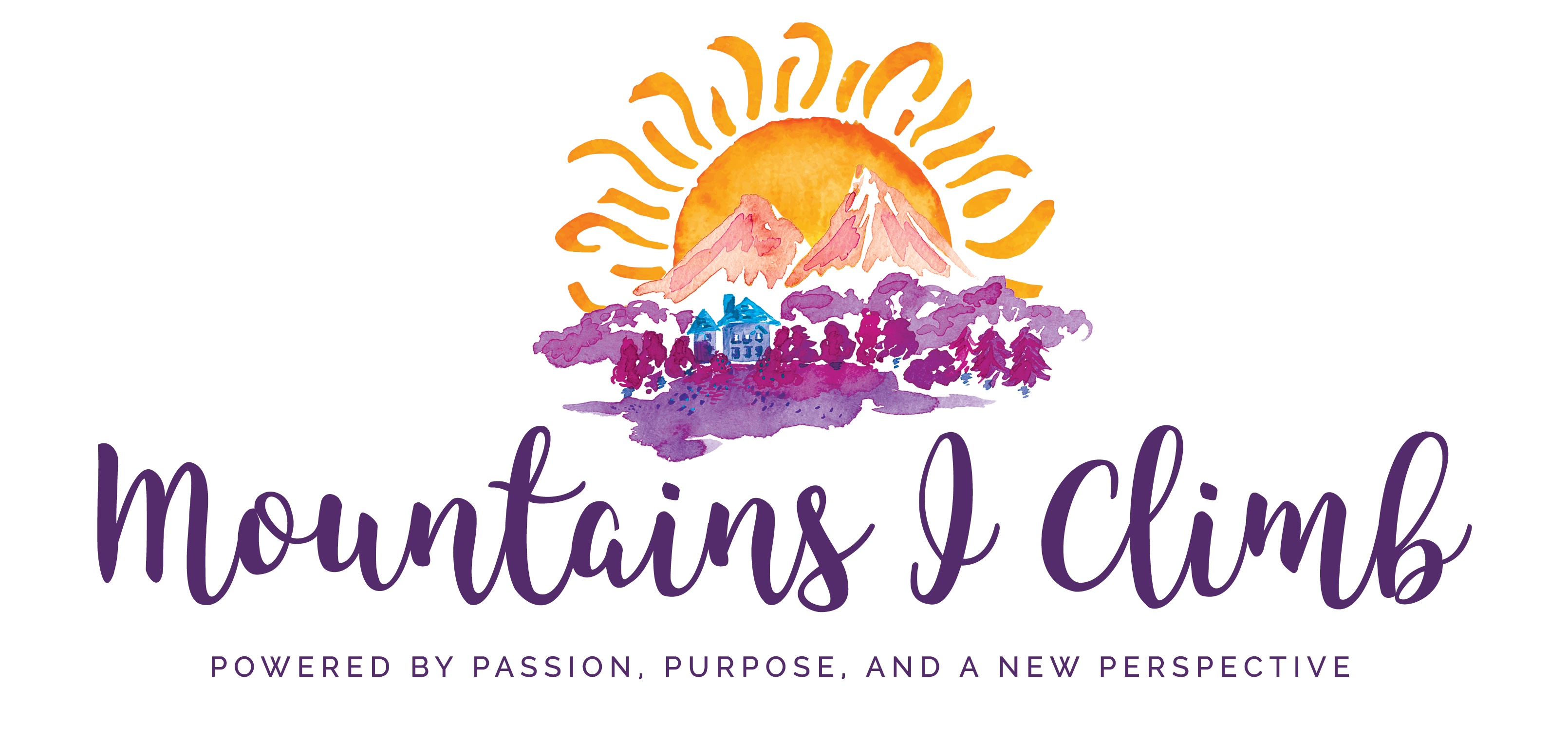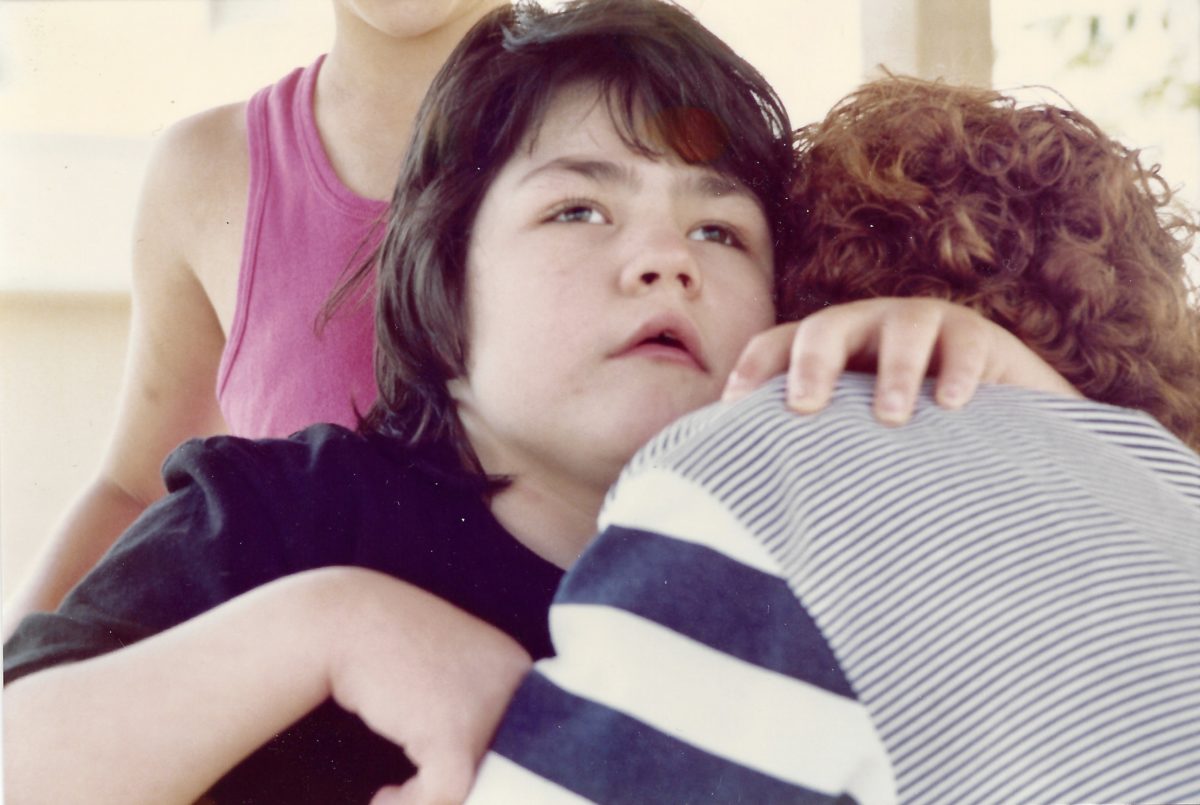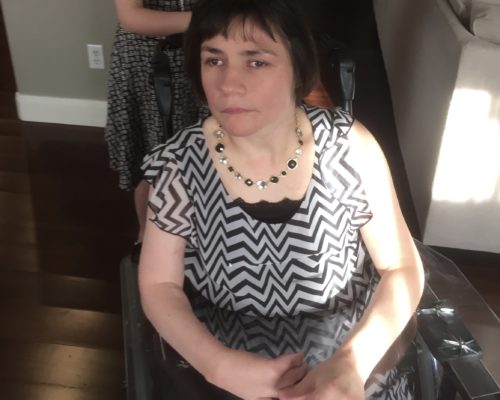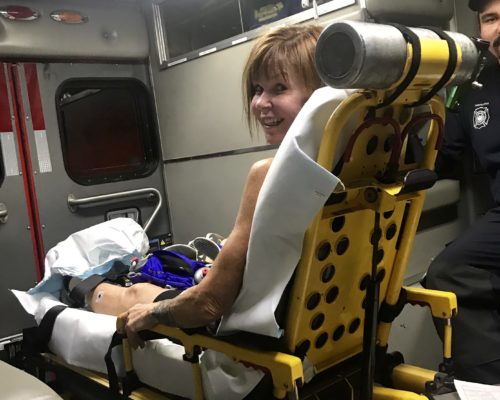I sit here at my computer contemplating hitting the “publish” button with tears in my eyes and heaviness in my heart. Writing and rereading this was difficult to do, but a reminder to me and my husband of why our daughter is here with us, and why we continue to do what we do, fight for what is best for her, feed, bathe, clothe and care for her every need daily. It is because we love her and promised to always keep her best interest in mind that we continue on this journey with her by our side, in our arms, our hearts, and our home.
I still remember the day our adoption Social Worker asked us to stay after class because she had a matter to discuss with us. Given no more information, I sat anxiously through that two hour class, dreaming up all sorts of reasons she may want to talk to us. Did we get a bad reference letter? Had she found some deep, dark skeleton in our family closet? Had we failed to meet some deadline? It was too early in the adoption process for a child to be found for our family. I just went to that dark place, imagining all the things that could be “wrong.”
After the meeting that seemed to take an eternity, Ron and I helped clean up, then the three of us proceeded to her private office. It was there she handed us a photo and read a little excerpt she had with limited information about a seven-and-a-half-year-old little girl living in an institution about 300 miles from our home. I heard her say, “she’s been abused and has a traumatic brain injury. It has left her paralyzed on her right side, she is unable to walk, talk or feed herself. She has epilepsy, a shunt (long pause), and did I mention she’s blind?” There, in my hand, I held a picture of a beautiful child with dark hair and eyes, and a big wide, heart-gripping smile. Yes, we’d be interested in meeting her. And, so our journey to becoming a family of five began.
Our story differs from so many others dealing with brain injury, because we did not know Melissa before her injury. We didn’t know who she was and what she was like previously. We met her, knowing who she was now, what the doctor’s expectations were for her, and all those things she did that others saw as incorrigible. She was a perfect match for our family! Still, her story does not come without grief and sadness, fear and tragedy, hope and faith, and all those emotions that other families face. Our story just started at a different place.
March is brain injury awareness month, which is why I’ve chosen this time to tell my Melissa’s story. I’ve been asked for years to share it, and I’ve chosen not to for many reasons. First, it’s her story, her personal journey, and I didn’t feel it was right to share without her permission. Melissa is nonverbal due to her traumatic brain injury (TBI), so asking if it is okay with her is not an option. Secondly, I have chosen to protect those who are innocent in this story, her birth family, and others who love her. Thirdly, I’ve chosen not to tell because it is extremely tragic, makes me sad and angry, and I didn’t see how sharing her story would benefit anyone. But, mostly I haven’t told because I wasn’t there, I don’t know all of the story, I’ve been told second or third hand, and pieced together pieces of the puzzle from countless hospital records, information given to me by professionals and people who have appeared in our lives who knew her previously.
I, finally, feel it’s time to share in hopes that her story will help someone else. I understand the only cure for brain injuries is awareness, education, and prevention. These things are the only cure for child abuse as well.
Her TBI is the direct result of abuse, at the hands of a man who walks free today. I am not looking for revenge, but I do hope he has changed his life path, and has not injured anyone else. Melissa does not hold anger or fear, and I walk beside her in that choice. She is my teacher, and has taught me well. In an effort to protect her, I will not share the entire story, because it is too personal, too horrible, and not mine to tell. She has no way of telling me what to put in or leave out, so I am going to concentrate on the head injury because I feel that is the piece that has most profoundly changed her life, and because TBI is what we are trying to bring awareness to this month.
On, what I imagine to be, a cold winter day, in January, 1984, a beautiful little girl was welcomed into the world by her young mother. In February, 1986, that little girl’s life would be changed forever. At just barely two years old she became another number, another statistic, another child lying in a hospital bed fighting for her life; the victim of someone else’s rage. Melissa was beaten on the head repeatedly, leaving her brain so swollen doctors had little choice but to take drastic measures, which included brain surgery, removal of most of the left hemisphere and debridement of the brain. The left hemisphere, typically, controls language and movement, among other things. She wears the scars of that abuse still today, 26 years later. That walking, talking, visually acute, potty-trained little girl has never regained any of those milestones. Melissa is considered severely intellectually impaired, has a seizure disorder, is blind, and has right hemiplegia, meaning her right side is mostly paralyzed. She is unable to walk, talk, feed herself, and is totally dependent on others for most of her basic needs.
We met Melissa on a hot summer day, when she was seven-and-a-half-years-old, living in an institution in a small rural town five hours from the place she once called home. She became our daughter through adoption, and has forever changed our lives. Her smile and giggle light up a room, her spirit is full, and her determination strong. Melissa is a fighter, a warrior, a survivor, adaptable, and loves unconditionally. She has been my greatest teacher, and I have learned more from her than any other single person in my life.
After the brain injury Melissa was admitted to the hospital where she spent many weeks. She developed grand mal seizures and fluid in her brain. She had a shunt inserted to drain the fluid, and it remains until this day. She was also put on medications for seizures. A feeding tube was inserted at some point to feed her, which has since been removed. She also had a mesh plate placed on the left side of her brain, to fill the void where her skull once was. After her hospital stay she was transferred to a rehabilitation facility for another year to receive therapies. She made her way from institution to institution because she “was a behavior problem.” There is much evidence now showing the correlation between the two; brain injury and varying degrees of behavior changes. Many questions come to mind when I hear this: Was anyone there to hold her? Did anyone advocate for her? Was there anyone consistent in her life? Was anyone looking out for her best interest? Did she know love or feel loved? Was she given needed therapies and were they effective? Did all the transfers lead to her making less progress than someone who had consistent, loving care?
I have so many questions, none of which will be answered. The biggest question that remains for me is, why didn’t the other side of her brain pick up what was not able to be performed by the missing half? I have read so much about neuroplasticity, which “allows the neurons in the brain to compensate for injury and disease and to adjust their activities in response to new situations or to changes in their environment” (MedicineNet.com). Others with similar injuries, especially at a young age, have formed new pathways in the brain, allowing other parts to that help compensate for what has been lost. We are still working on that puzzle piece.
I do not feel her healing is over. Although, at this point, we know most of the damage done will remain, there are still ways to adapt and compensate for the loss. I truly believe the brain can continue to heal for a lifetime, and we can facilitate much of that healing without medical or professional intervention. Building a new life after a brain injury is a lifelong journey; one we will continue to take as a family alongside our daughter.
(Part II: Later this week, will talk about grief and loss)




